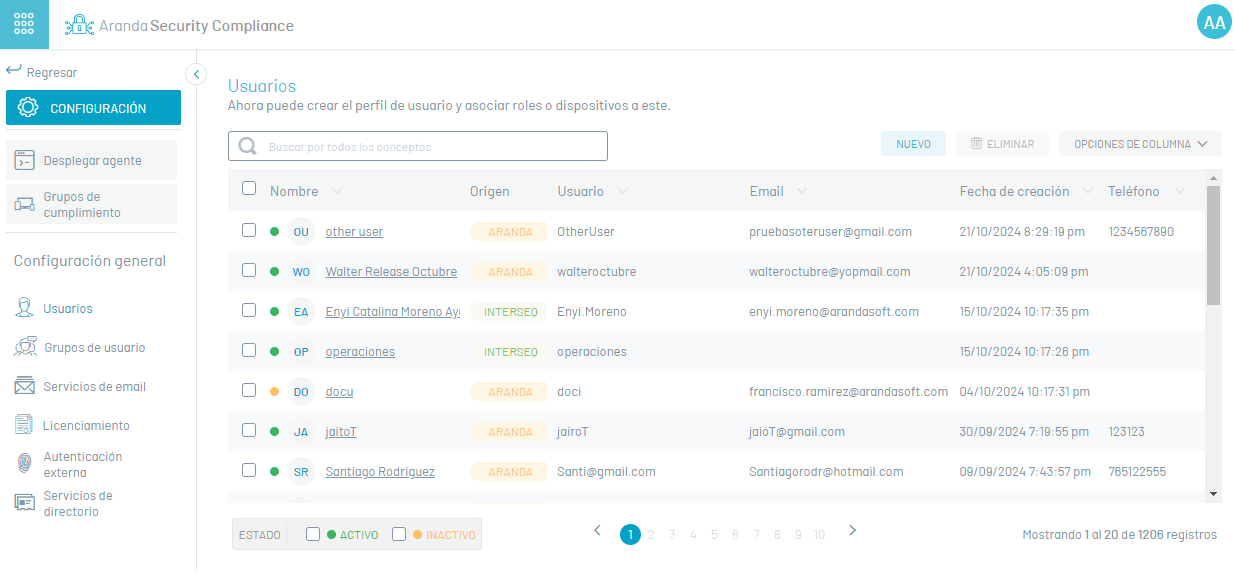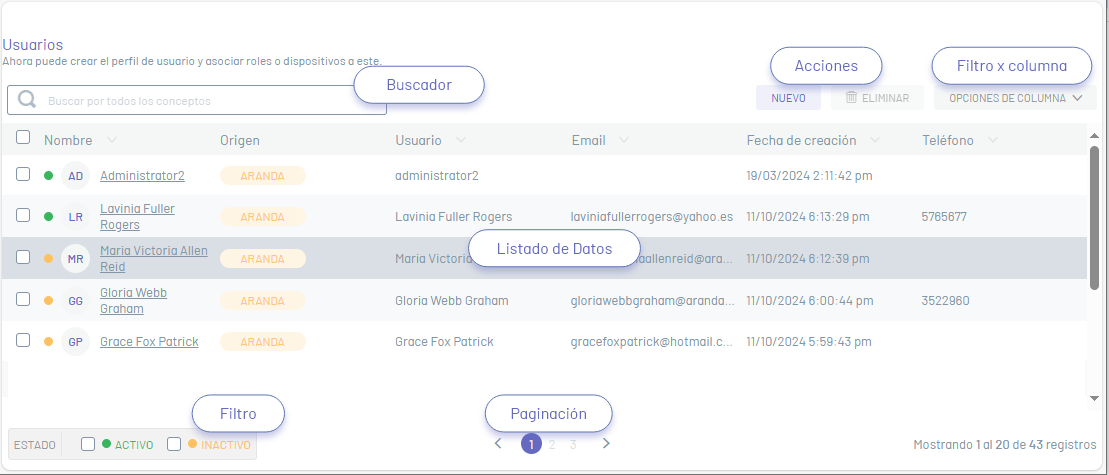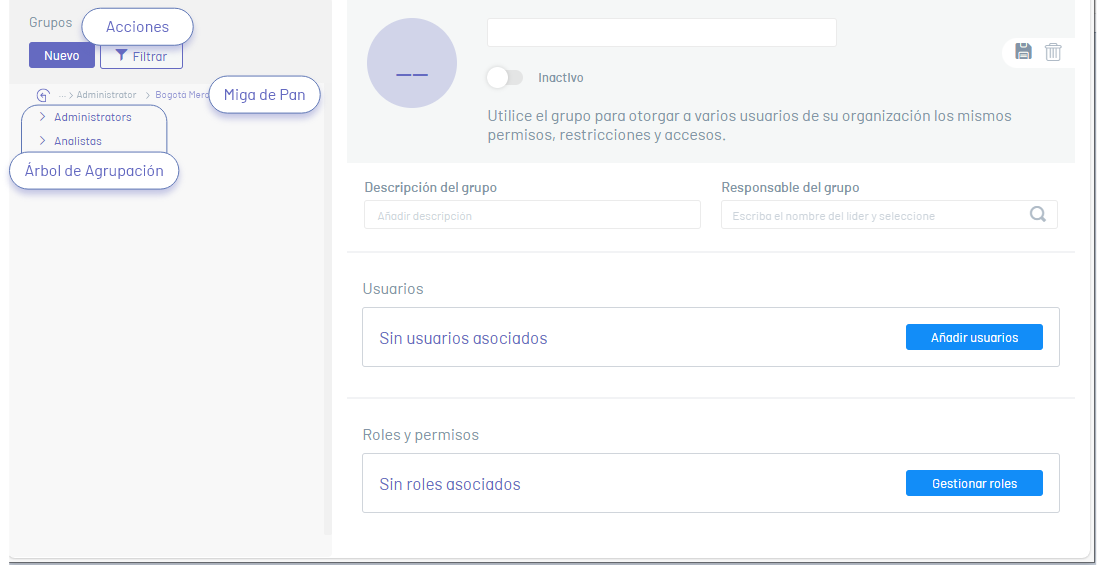The management and configuration of the configuration processes for different Aranda applications are carried out from a web environment with shared options and actions.
Visualize Environment
1. After logging in, log in to the product’s web console with the role set (admin, specialist, users).
2. In the main menu of the Aranda product, in the Configuration, select the respective module (Users, Mail Server, External Authentication, Directory Services, Integration Tokens) and doing so enables the information view with the related data.
⚐ Example: In the following image you can see the configuration section of the Aranda Security product, with the common modules used.

Environment Commons/ Modules
3. In the information view of the selected common module (Users, Mail Server, Directory Services, External Authentication) you can find transversal actions that complement the management tasks such as:

Below are the available options and the commons modules where they are used:
| Option | Description | Common Modules |
|---|---|---|
| Search | It allows you to search for the list of users according to the search criteria. You can search by the name of the defined fields of each associated concept.  |
     |
| Data Listing | This section groups the information from the found records by selected module or item. The information presented is grouped into columns with the data entered. By selecting the record from the available list, you will be able to view and edit the associated data, or delete the record. |      |
| New | This button defines the action to create a record for each Aranda product management concept. Activating this action enables a window to fill in the related information.  |
     |
| Eliminate | This button defines the action for deleting a record that has already been created in the management processes.  |
     |
| Filter by column | Allows you to show or hide options from the list.  The column options of the users module are: Name, origin, user, email, date of creation and phone. The column options of the users module are: Name, origin, user, email, date of creation and phone. |
 |
| Pagination | It allows you to navigate between the pages of the list of user records found.  |
     |
| Filter by Status | Allows you to filter by the active or inactive status of users or authentication providers.  In the Integration Tokens module, you allow you to filter by the current or expired status of API connection tokens created.  |
    |
| Safety | This button  defines the action to perform the reCAPTCHA settings to use it at the time of user authentication. defines the action to perform the reCAPTCHA settings to use it at the time of user authentication. |
 |
Commons Environment/ Groups Module
4. In the information view of the selected common module (Groups) you can find actions that complement the management tasks.
5. In the tree-like structure for user groups, you can identify the following components:

| Option | Description | Common Modules |
|---|---|---|
| New | This button  Defines the action for creating a User Groups record. Activating this action enables a window to fill in the related information. Defines the action for creating a User Groups record. Activating this action enables a window to fill in the related information. |
 |
| Filter | This button  Defines the action to perform an advanced search through the entire group tree. Activating this action enables a window to fill in the related information Defines the action to perform an advanced search through the entire group tree. Activating this action enables a window to fill in the related information |
 |
| Grouping tree | This section displays the defined groups and subgroups. |  |
| Eliminate | This button  Defines the action to delete an already created group record Defines the action to delete an already created group record |
 |
| Breadcrumbs | This icon  Displays the current location in the group tree. Displays the current location in the group tree. |
 |
| Add Users | This button  Defines the action for associating users with an established group. Defines the action for associating users with an established group. |
 |
| Manage Roles | This button  Defines the action for associating roles with an established group. Defines the action for associating roles with an established group. |
 |


